moc scales
Back in the 19th century, when you entered a museum where paintings of old masters were on exhibition, chances were that you encountered flocks of art students meticulously copying those pictures. During the heyday of academic painting this was a didactic standard procedure. Nowadays this practice more often than not is spat upon by the protagonists of the art scene.
Back in the heyday of Max-Payne modding countless recreations of characters, weapons, and architecture from the Matrix-franchise were accomplished by members of the community. Yours truly was ↑no exception.
Recreation of cherished artefacts from intellectual property franchises is a core practice within the according fandoms. I deem it to be appropriate to conceptualize said practice as an instance of appropriation. Successful recreation requires a lot of research and a lot of dealing with, and thinking about the original. And once you have recreated e.g. a spaceship from ‘Star Wars’ to your satisfaction, the relationship between you and the ship is altered for once and forever. When you see that spaceship again at the cinema or on your TV-screen, you will look upon it differently. Now there is a bond between you and the ship—in a way it’s your own now.
The Star-Wars aficionados within the ↵Lego-moc scene naturally are preoccupied a lot with recreating spacecrafts and everything else from Lucas’ galaxy far, far away. Creating and recreating by means of Lego-bricks and -pieces is a playful practice—I mean it in the sense of the definition of play by Katie Salen and Eric Zimmerman: ‘Play is free movement within a more rigid structure.’ (Salen & Zimmerman 2004: 304)
With Lego you can create almost everything, nevertheless the geometric and physical qualities of the pieces impose limits. There are rules which can’t be broken or bypassed, constituting the rigidness of the Lego-system. But then again Lego allows an astounding breadth of variation. For example in respect to the scale at which you intend to recreate an artefact by means of Lego.
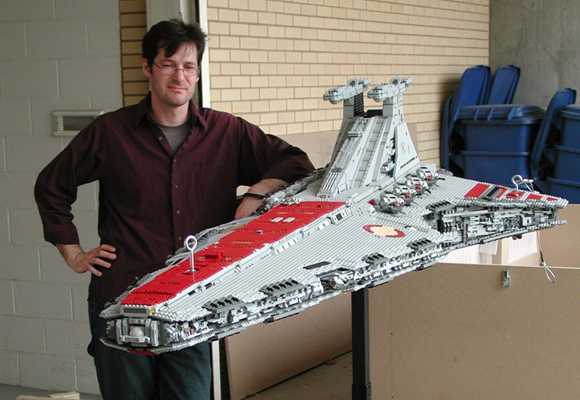
This is Erik Varszegi, a Lego Master Builder—meaning that he works as a model designer at the Lego company—leaning upon his famous recreation of a ↑Venator-class Star Destroyer as seen in e.g. ‘Revenge of the Sith’ (Lucas 2005). ↑Varszegi’s own creation consists of about 35,000 Lego-pieces, weighs 68kg, and is 2.44m long. The ‘original in the Star-Wars universe is 1,137m long, meaning that the Lego-model is at a scale of 1:466.
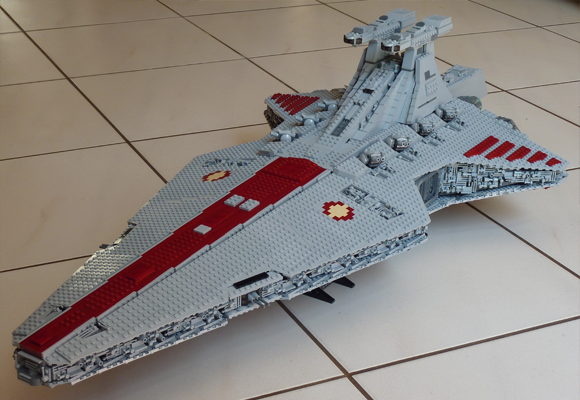
This ↑Venator by Polo aka ↑Atix_naid consists of 5340 pieces, is 112cm long, and therefore at a scale of 1:1015.

This is not a moc, but the official retail version of the Venator, Lego-set 8039, released in 2009. It consists of 1170 pieces, is 51cm long, and hence at a scale of 1:2229.
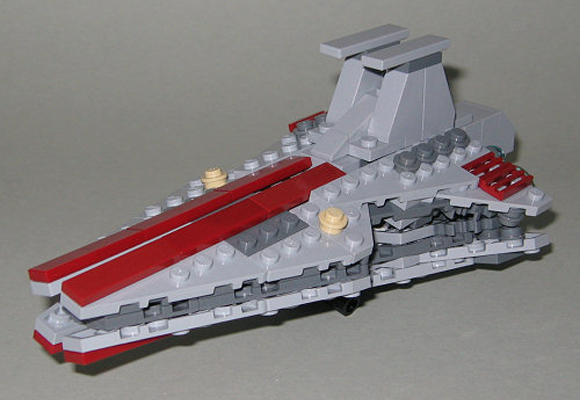
With this masterpiece by ↑Christopher ‘Legostein’ Deck we slowly approach the other extreme end of the moc-scales spectrum. This rendition consists of 220 pieces and is scale-matched to Lego-set 8099: Midi-Scale Imperial Star Destroyer. So it is at a scale of 1:6400.
But that’s not where Legostein stops:
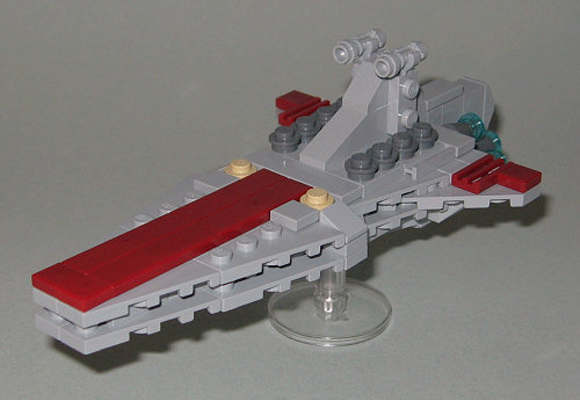
His ↑Mini Venator Attack Cruiser consists of 120 pieces, at a scale of 1:7383.
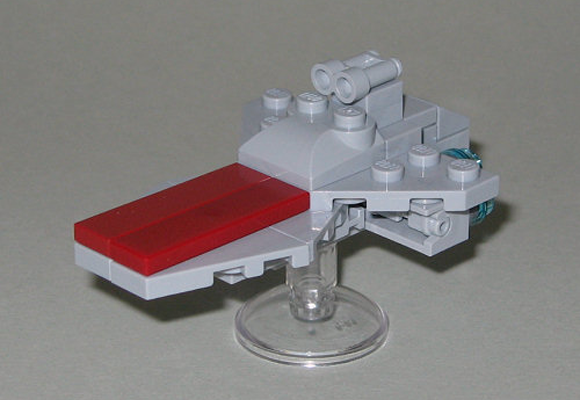
And finally Legostein’s ↑Micro Venator Attack Cruiser consists of just 33 pieces, and is at a scale of 1:15902.


Not only lego but simple paper…Starwargami
http://www.wired.com/design/2012/11/starwarigami/
Ooooohh, wonderful! Now I know what I’ll be doing during xmas holidays :) … by the way, have you seen my ↵dart plane?